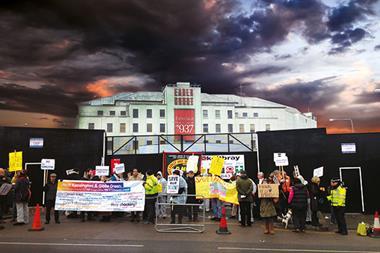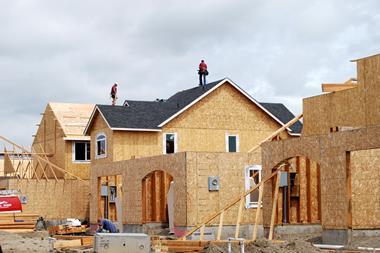In general, the atmosphere on the London stand at Mipim last week was extremely cheery.

Everyone has work underway and even the uncertainties of the coming election could not dampen the spirits of the party-goers (sorry, delegates) who had to make do, for once, without an appearance from Mayor Boris.
What was undeniable, however, was the serious concern - expressed by speakers both in public and in private - about the ongoing disaster that is the London housing shortage. When Mipim launched its first UK event in London last October, the opening morning became a news story when protesters tried to barricade Olympia, demanding action to help the homeless and those unable to afford to live in decent conditions in the capital.
Quite wrongly, the protesters assumed that the property people attending the event cared little about housing conditions for the many. It wasn’t true in London and it wasn’t true in Cannes, not least because property folk have children struggling to get a mortgage, or afford the so-called affordable housing being supplied by home-builders who also have children.
Moreover, the shortage of available serviced sites, skilled labour and mortgage money, plus the mañana attitude of national politicians to this problem, is clearly undermining the image of London as Europe’s most dynamic city. That, of course, is bad for business.
Population levels
It may be understandable that the public and media think that population levels, not seen since the 1930s, are an unpredictable phenomenon, but it is certainly not acceptable for our political leaders to have treated it in that way. The near panic that finally triggered the construction of Crossrail after five decades of dithering was evidence that Transport for London, under its efficient current leadership, was finally on the case.
It was TfL strategy planners who spotted, by analysing census data in the early 1990s, that the capital’s long-term depopulation had come to an end, and that inward migration from continental Europe was transforming central London. It is a pity they weren’t responsible for housing too. The political failure by all parties and both central and local government to do something about what was under their noses will baffle future historians.
In Cannes, you could almost hear the distress in the voices of people like Tony Pidgley (Berkeley has been responsible for more social housing than any local authority in recent years) and Gary Yardley from Capco (building thousands of homes at Earls Court) that there is as yet little discernible focused political ambition at the highest level to sort this mess out.
Can we do it? Of course we can, as we have done in the past. Terry Farrell gave an inspirational talk in which he urged us to deliver the necessary homes within London’s borders, to reject the idea that density means the end of amenity, and to celebrate and enhance the capital’s green spaces, those identifiers that you are in London and not some other city. There were plenty of free-market property people who told me last week that they would welcome the full-blooded return of public housing, provided it was designed to avoid enclosing monocultures of deprivation and failure.
As far as affordable is concerned, the thing those responsible for housing do not want to hear is what mortgage a middling youngish couple might reasonably be expected to afford (£250,000?) and the implication site prices. They start muttering about PRS.
The real question is how to bring public land into the equation, in a way designed to address the Dickensian disparities of wealth and property ownership that are now disfiguring the world’s greatest city.
Paul Finch is programme director of the World Architecture Festival






























No comments yet